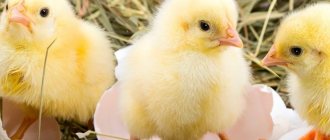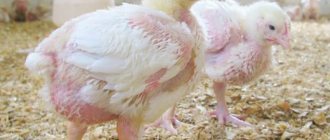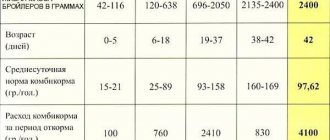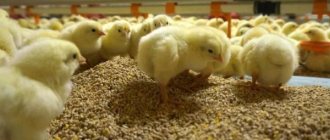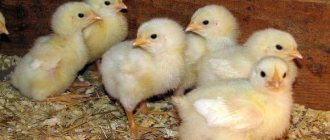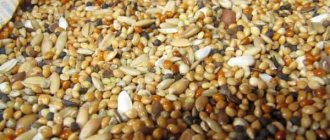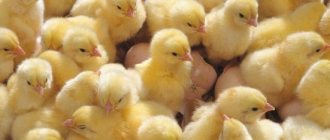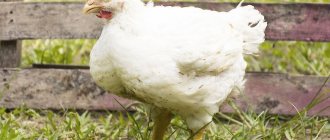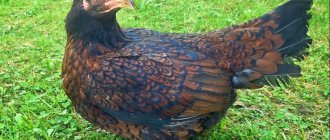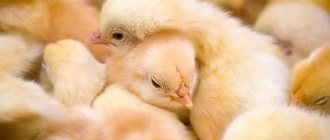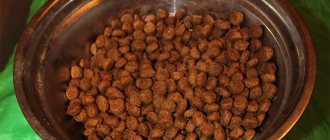Good afternoon, experienced and novice poultry farmers! Today we are debriefing on compound feed for broiler chickens - from the advantages and disadvantages to how to prepare it yourself.
The efficiency of poultry farming, in principle, like livestock farming, primarily depends on feeding. It is not without reason that feed accounts for at least 60% of the cost of poultry products. Therefore, it is important to feed the birds so that they consume as little feed as possible per ten eggs and 1 kg of live weight gain.
In this regard, it is of great interest to feed chickens with compound feed - feed mixtures that are maximally balanced in organic and mineral nutrients.
Combined feeds are recommended for poultry of all age groups and regardless of gender. Therefore, today we will talk about the principles of using compound feed in the feed supply of broiler chickens.
Factory compound feed for broiler chickens
Advantages of diets consisting of mixed feed. Broiler birds are sent for slaughter at approximately 3 months of age. In the conditions of industrial poultry meat farming, broilers reach slaughter condition by 42 days of age. This result is achieved thanks to high-calorie feed mixtures.
Birds show maximum productivity and good health only when they are provided with a diet that satisfies their need for protein, fats and carbohydrates, as well as biologically active substances - vitamins and minerals.
Unfortunately, in amateur poultry farming, minerals and vitamins are neglected. But they are no less important. For example, if young animals are deprived of vitamin D, they are less able to absorb calcium. This can cause problems such as falling on your feet. In egg production, a lack of these substances leads to the development of a syndrome called cellular depression.
Let's return to compound feeds. They are formulated in such a way that they satisfy the poultry’s need for all nutritional elements balanced in the diet. This is one of the advantages of combined feed mixtures.
There is something to think about: if you have a vegetable garden and grow traditional root and tuber crops for us, you have an excellent opportunity to prepare combined feed mixtures that are almost as productive as, and in some criteria are superior to, industrial-type feed mixtures.
Compared to perishable wet mash, which is prepared for one time, industrial-type feed stands out due to its long shelf life and therefore reduces time and physical costs.
Finish
Finish feed is given to broilers at one month of age or earlier. The energy value increases to 325 kcal/100 g. The proportion of crude protein decreases slightly. Fraction – granules. Egg breeds are transferred to the Finisher later and fed according to a different program. Laying hens are supplemented with components that promote good egg production - sunflower seeds, soybeans, grass flour from leguminous crops, and an increased dose of calcium. The norm for broilers is from 160 g. Laying hens are given an average of 120 g. When laying eggs, the norm is increased taking into account productivity - add 5 g for every 30 eggs over 100 pcs.
Compound feed for broiler chickens by age
Requirements for combined feed mixtures.
Classification of compound feeds depending on the age groups of birds for which they are developed.
- " Pre-start ". This food is given to 1-5 day old chickens. His recipe is designed in such a way that young animals are prepared for more high-calorie food. Compared to other types of feed, this one is more rich in vitamins and minerals.
- “ Start ” is food intended for 5-15 day old chickens. The composition of this feed strengthens the ligaments and bones of broilers.
- " Height ". This is feed for 2-5 week old broilers. Compared to the previously mentioned types of combined mixtures, “growth” is richer in terms of the number of ingredients, which, moreover, are higher in calories.
- “ Finish ” is a composition developed for poultry fattened from the beginning of the second month of life until sent for slaughter.
“Starter” feed consists of:
- grains (wheat + corn);
- meat and bone meal;
- cake;
- salt;
- chalk;
- charcoal.
“Growth” compound feed contains similar ingredients and is also supplemented with peas, a source of protein.
As for the “finishing” feed, in addition to the above components, it includes soybean meal.
Percentage of grain in feed:
- “Prestart” – corn, barley and other grains – up to 70%;
- “Start” and other types of feed – no more than 40%.
Feed pellets increase in size as the birds to which they are fed grow older.
Tips and tricks
The combined mixture ensures rapid growth of broilers. On pasture they grow much slower and do not gain maximum weight before slaughter. It is not worth feeding the bird for longer than three months, because it is unprofitable. In addition to basic feeding, medications against the appearance of diseases are necessarily given, and the pen is disinfected. There should always be access to food, and there should be no crowding in the cage. If fed properly, one-month-old chickens should weigh 500-700 g, and two-month-old birds should weigh 2 kg.
If a broiler is fed with one compound feed, the bird will reach its maximum weight of 2.5 kg in 40 days. Granules are better digestible, so if you breed a lot of birds, it is better to buy a granulator.
Additives to feed for broiler chickens
No matter how much manufacturers praise their feed for broiler chickens, not one of them is able to fully cover the birds’ needs for vitamins and minerals. This problem can be solved by including a premix in the feed. The latter, in addition to minerals and vitamins, may contain natural growth stimulants, essential amino acids and even antibiotics.
Popular supplements for broiler growth include probiotic powder and natural growth promoter. Indeed, it's time to live with the times!
It is worth paying attention to the compositions presented:
- vitamins gr. B, A, D, K, E and, ascorbic acid;
- iron, fluorine, zinc, copper and other minerals;
- enzymes (protosubtilin, amylosubtilin);
- feed yeast;
- chalk.
To prevent or combat the disease, premixes are supplemented with feed veterinary drugs and tranquilizers. Important: you should not self-medicate, as this can aggravate the situation. Medicines should be prescribed and the optimal course of treatment determined by a veterinarian.
Which compound feed for broiler chickens should you rely on – your own or purchased feed?
Feeding broiler chickens: types of feed
A balanced diet is the most important factor when raising broilers.
In other words, along with the feed, the chicken should receive all the nutrients, fats, carbohydrates, vitamins and proteins necessary for active growth. The ideal option for feeding is compound feed. After all, not every breeder can independently prepare a balanced diet in calculated proportions, especially if we are talking about a private farmstead. Compound feed is sold ready-made and contains everything that is necessary for broiler chickens to gain weight.
Compound feed for broiler chickens, purchased or homemade?
Purchasing industrial complete feed eliminates the need for daily preparation of feed mixture. At the same time, there is no need to fear that dangerous food will get into the bird’s diet. Why? The fact is that feed is subject to mandatory epidemiological control.
Advice: do not buy feed in damaged packaging. Fats in compound feed quickly oxidize and make the feed potentially dangerous for poultry.
By the way, after opening the package (bag), feed containing antioxidants (naturally natural, not synthesized) are stored longer.
Compound feeds are primarily of interest to poultry farmers who do not have the opportunity to grow ingredients for them.
If a vegetable garden is available, why not learn how to prepare combined feed mixtures. This will save both energy and time financially. In addition, the preparation of compound feed cannot be called a complex operation.
Do-it-yourself compound feed for broiler chickens composition proportions
Feed recipes for broilers of different age groups. We start with industrial ones and up to two weeks!
To set up your own small feed production, you need to acquire a grain crusher and a large container.
2 weeks
14-day-old chickens readily feed on cornmeal, which accounts for 50% of the feed. Wheat flour is also recommended for chicks - 16%. The inclusion of cake in the mixture has a positive effect. Its percentage ranges from 13-15%. The combined feed should also contain barley - approximately 8%.
Kefir has a positive effect on the digestibility of food. The ratio of basic feed and kefir is 10 to 1. The daily norm of such feed reaches 30 g.
Advice: if the starter feed for broiler chickens has caused diarrhea in young animals, feed it with a weak solution of potassium permanganate.
3 weeks
Birds at this age are given a more varied diet. Typically this is a mixture containing corn - 45%, cake - 20%, wheat - 13-15%, fish meal - 7%, green feed - 6%, yeast and feed fat - 5 and 1%.
Experienced poultry farmers make the basic mixture prepared for young animals over the age of three weeks more varied by including milk and kefir. It is allowed to use milk as a separate feed, and not as part of mixed feed.
From 30 days
The simplest thing that can be offered to broilers at this age is a mixture that consists of:
- wheat, barley, corn and soybeans - each type of grain 20%;
- peas and cake – 5% each;
- protein-vitamin supplement – 10%.
An alternative solution would be to include corn in the feed - 45%, cake or meal - 18%, wheat - 12%, barley - 8%, fish meal - 7%, yeast -5%, greens and chalk - 1% each, as well as feed fat – 4%.
The grain intended for the preparation of starter and growth feed is first passed through a crusher. Whole grains are used to prepare the finishing feed.
At the end of fattening, the bird responds with additional weight gain when fed with bread crusts and crumbs, boiled potatoes, and grated carrots.
To ensure that roughage is ground faster and more thoroughly in the gizzard, the bird is given constant access to gravel.
Good luck!
Subscribe to site updates and our channel “Chicken” in Yandex.
See you later, colleagues! In the meantime, we will prepare new and interesting information for you!
Did you like our tips? Share with friends on social media. networks!
Food for individuals from 2 weeks to a month
The main difference between Broiler Rost (PK6-2) feed and its previous analogue is the increased size of the granules. This feature usually promotes rapid absorption of food. The fact is that grown-up broilers at this age are already accustomed to swallowing quickly and in large quantities, so this feature is necessary.
But these are not all the differences. There is also a difference in the composition of feed for chickens. It is more adapted to older birds and is a set of all the necessary microelements for normal further growth. Among the new products in the feed you can find meat and bone meal, any vegetable oil and lysine. This food is recommended to be given to birds aged from 2 weeks to 1 month.
Compound feed for the smallest broilers PK6-1 can be used in the diet exclusively in the first 2 weeks after birth.
But, just like in the previous case, you can make compound feed at home. At this age, the daily norm for 1 chick is 120 g of natural food. It is very important to calculate how much feed you need for all the chickens, after which you can start cooking. The feed dosage should be as follows:
- corn - 48-49%;
- cake - about 18%;
- wheat - 13%;
- meat and bone meal - 7%;
- special yeast - about 5%;
- dry return – 3%;
- dried grass - 3%;
- fat - only 1%.
Preparing this feed takes a little time, but experts advise giving broilers this mixture in the form of a wet mash.
